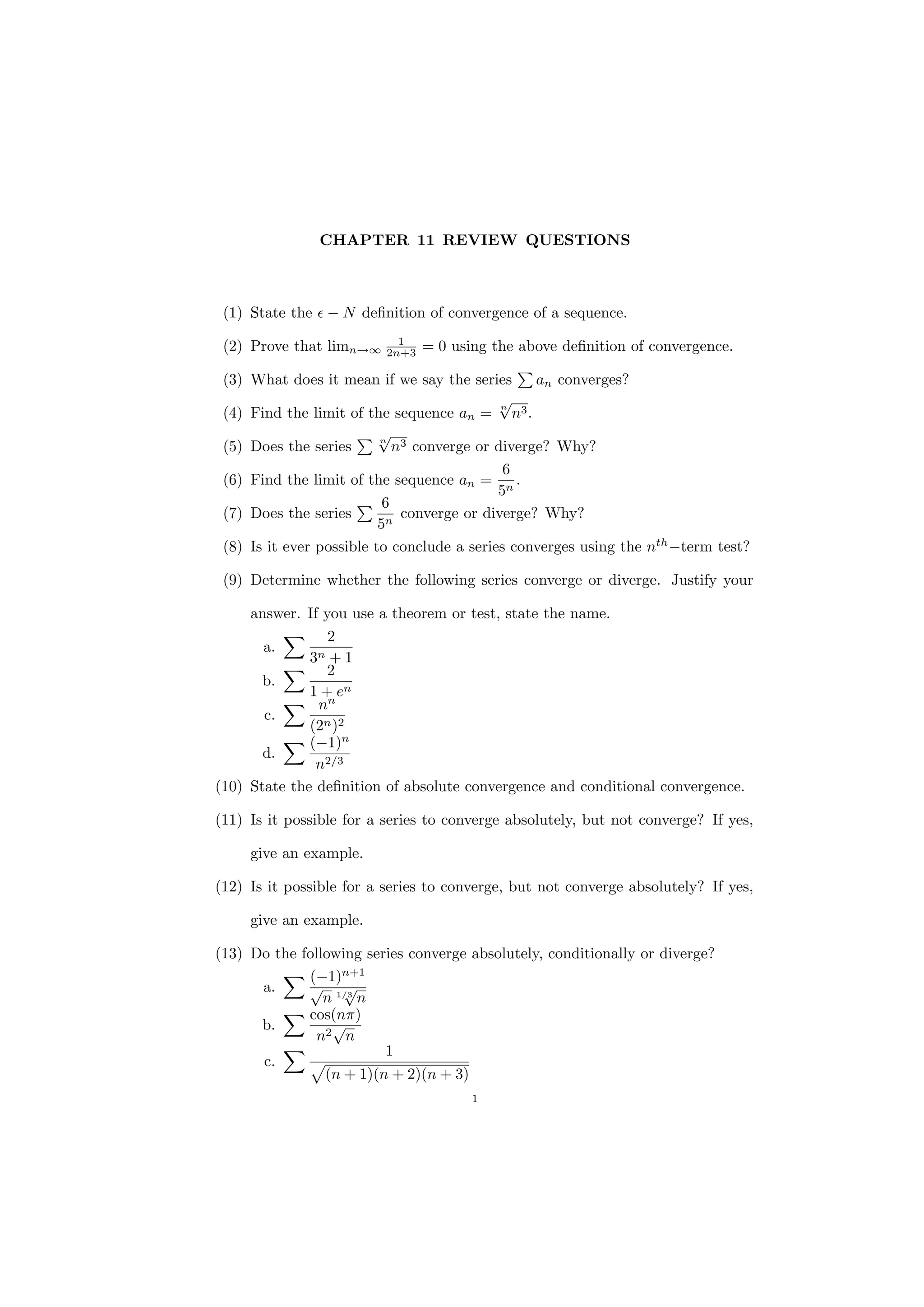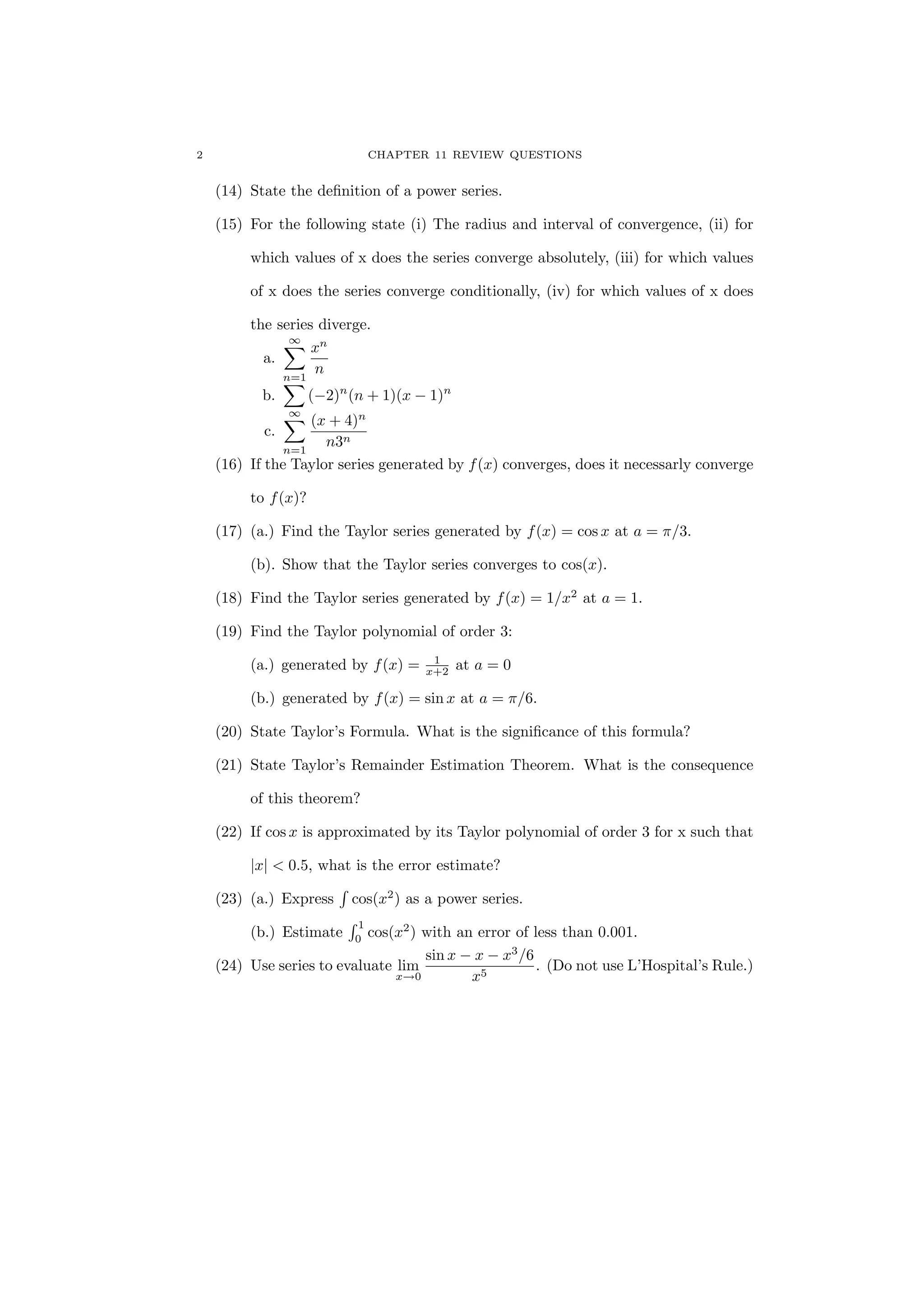This document contains 24 review questions about key concepts in chapter 11 of a calculus textbook, including:
1) The definition of convergence for sequences and using it to prove limits.
2) The definitions of convergence for series, absolute convergence, and conditional convergence.
3) Tests for determining if series converge or diverge, including the nth term test.
4) Power series, including radius of convergence, intervals where series converge absolutely or conditionally.
5) Taylor series and polynomials, Taylor's formula and remainder theorem, and using series to approximate functions and evaluate limits.

